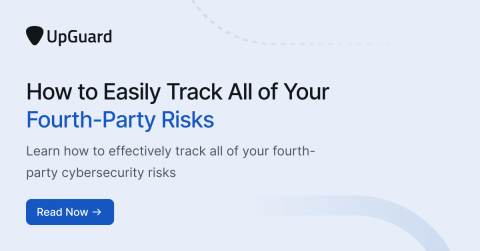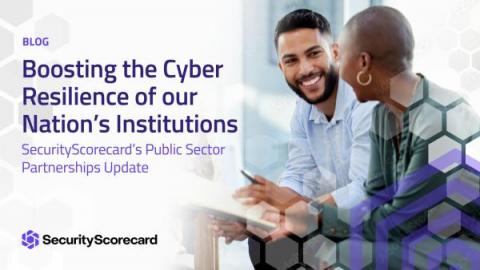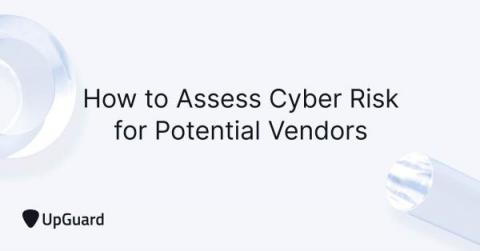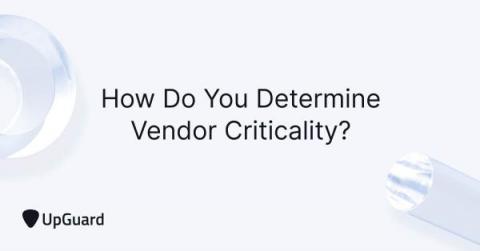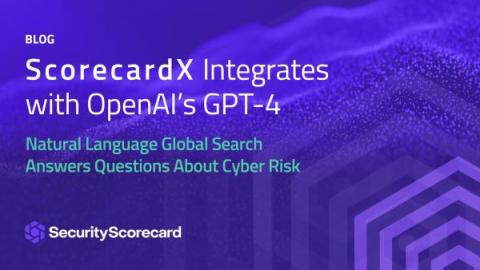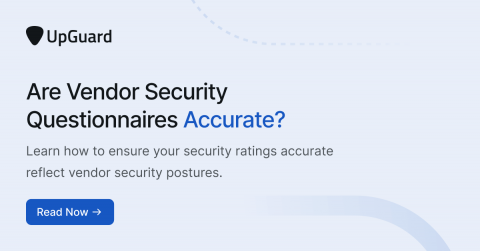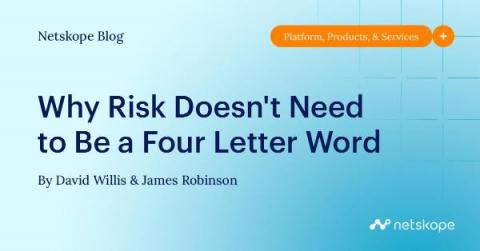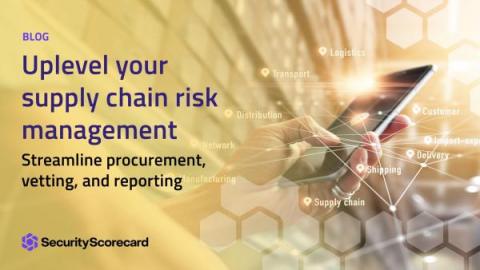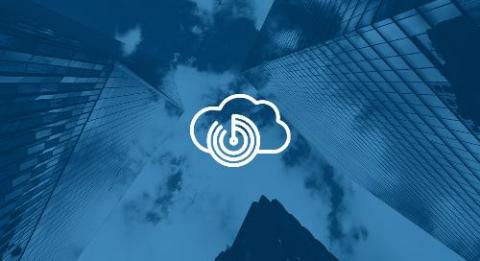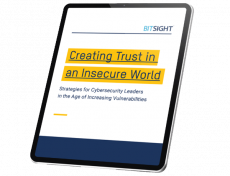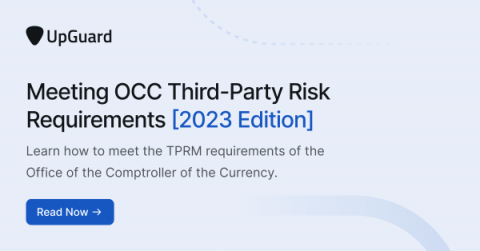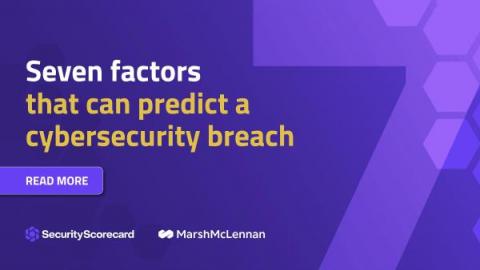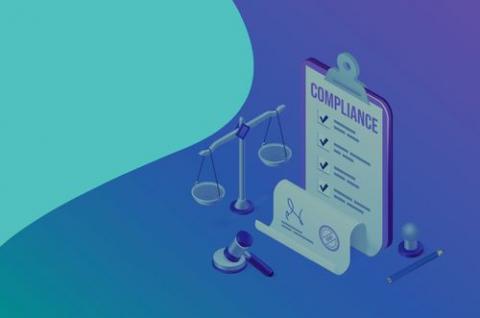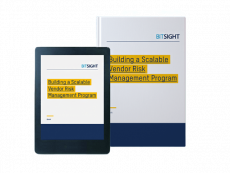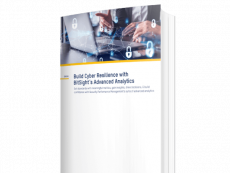Security | Threat Detection | Cyberattacks | DevSecOps | Compliance
April 2023
Reduce silos and prevent supply chain threats
We’ve entered the fourth and final week of National Supply Chain Integrity Month, an initiative started by CISA and other government agencies to highlight the importance of securing our nation’s most critical systems and ensuring they stay resilient. I started off the month with a post about maturing your third-party risk management program, and followed that up with two more posts dedicated to securing the small business supply chain and streamlining procurement.
How to Track All of Your Fourth-Party Cybersecurity Risks
What's new in UpGuard // Cyber Vendor Risk Management Product Releases
Paws in the Pickle Jar: Risk & Vulnerability in the Model-sharing Ecosystem
Boosting the Cyber Resilience of our Nation's Institutions
The White House’s ambitious national cyber strategy— which represents a shift away from decades-old voluntary compliance guidelines to a more aggressive regulatory approach of critical infrastructure firms—couldn’t come at a better time. A recent study found that local governments were the organizations least capable of disrupting ransomware attacks, and that they were also among the ransomware victims to pay ransoms most frequently (43% paid a ransom after an incident).
Benefits of Risk Management Software
5 Things a Security Manager Should Check Every Morning
As a security manager, you have a wide variety of tasks you need to complete in order to protect your organization — as well as your employee and customer data. Of course, some of these responsibilities are performed on a quarterly or yearly basis, such as gathering information for audits or conducting annual assessments. But there are certain tasks that you should be completing daily in order to maintain the desired security posture and reduce cyber risk across your expanding attack surface.
New high-severity vulnerability (CVE-2023-29552) discovered in the Service Location Protocol (SLP)
Researchers from Bitsight and Curesec have jointly discovered a high-severity vulnerability — tracked as CVE-2023-29552 — in the Service Location Protocol (SLP), a legacy Internet protocol. Attackers exploiting this vulnerability could leverage vulnerable instances to launch massive Denial-of-Service (DoS) amplification attacks with a factor as high as 2200 times, potentially making it one of the largest amplification attacks ever reported.
How to Assess Cyber Risk for Potential Vendors (Complete Guide)
How Do You Determine Vendor Criticality?
ScorecardX Integrates with OpenAI's GPT-4
As part of SecurityScorecard’s commitment to making the world a safer place, we are now the first and only security ratings platform to integrate with OpenAI’s GPT-4 system. With this natural language processing capability, cybersecurity leaders can find immediate answers and suggested mitigations for high-priority cyber risks.
AI Risks (& the Race to Manage Them)
Oversight of Cyber Risk: The Board's Essential Role in Mitigation and Prevention
5 Common Vulnerabilities Associated With Remote Access
After COVID, enterprise IT security got turned on its head. As the world adjusted to working from home, and continues to, IT teams worked overtime to enable remote access for millions of employees. This transition has gone smoothly for most organizations, but many security gaps still remain years later. The SolarWinds data breach is a worrying example. It shows how vulnerable organizations are to malicious activity in our changing risk environment.
Yes, It's Possible to Complete Vendor Questionnaires Faster
Are Vendor Security Questionnaires Accurate?
What is Fourth-Party Risk Management (FPRM)?
Remediate Zero Day Events with Third-Party Vulnerability Detection & Response
When a major security event like SolarWinds or Log4j happens, how do you assess the impact across your third-party supply chain? Most organizations struggle to effectively react to zero day attacks and other critical vulnerabilities at scale, often following manual and cumbersome workflows. But our latest capability is here to change that.
Bitsight Partners with Moody's Analytics-Incorporating Cyber Analytics into Its Leading Integrated Risk Products
A recent study found that financially material cyber attacks are increasing in frequency and that the top 5% of such attacks lead to an average $52M in losses. As these types of cyber attacks become more frequent and more severe, it has become increasingly critical for risk managers outside of enterprise security functions —such as compliance and credit officers—to consider cybersecurity risk in their assessment of customers, suppliers and investments.
Bitsight Updates Ratings Algorithm to Reflect Changes in Attack Dynamics
Today we are announcing updates to the Bitsight ratings algorithm. Bitsight is committed to creating the most meaningful, trustworthy, and actionable security ratings and analytics in the marketplace. As part of this commitment, we periodically make updates to our ratings algorithm based on new data observations and capabilities, internal and external research, and market feedback. For this year’s update, we have made several adjustments, including modifying the weights of several risk vectors.
An Evolved Bitsight Starts Today as We Expand into Integrated Cyber Risk Management
In 2011, Bitsight invented the security ratings industry. As the market leader, we are still the standard in how organizations quantify, manage, and monitor cyber risk. Today, that universal metric is used by entities from national governments to global enterprises to Fortune 500 companies to interpret cyber risk. And now, we’re disrupting the industry once again. Waves of change are constantly disrupting companies of all sizes around the world, particularly when it comes to cybersecurity.
Introducing Bitsight Third-Party Vulnerability Response
Bitsight - Cyber Risk Management as Visionary as You Are
Why Risk Doesn't Need to Be a Four Letter Word
Risk used to be a word thrown around as if it could be defined generally and, once defined, consistently applied to all business and technology use cases. This didn’t work out so well for customers, CISO’s, or vendors. Risk was a “four-letter-word” and it fell out of common use.
Uplevel your supply chain risk management
We’ve entered Week #3 of National Supply Chain Integrity Month, an initiative that CISA and other government agencies started to highlight the importance of securing our nation’s most critical systems and ensuring they stay resilient. For Weeks #1 and #2, I wrote about maturing your third-party risk management program and securing the small business supply chain.
How Financial Services Organizations Can Achieve Compliance and Reduce Cyber Risk
A Step-By-Step Guide to Creating a Risk Register (Template included!)
Running a business is full of surprises. Unexpected events can pop up at any time, potentially leading to the derailment of your organization’s goals. If everything suddenly went haywire, would you and your team know what to do in the heat of the moment? That’s precisely why having a robust risk management program is crucial, and it all starts with a risk register – a tool used to identify and mitigate potential problems.
Benefits of Data Leak Detection Software
How Ineffective Risk Management Led to the Collapse of Silicon Valley Bank
How to Improve Your SOC's Cyber Vulnerability Awareness
The cybersecurity threat landscape is rapidly evolving as cloud computing, the Internet of Things (IoT), mobile devices, and remote work become more widely adopted. As a result, Security Operations Center (SOC) teams are increasingly overwhelmed. In addition to responding to cyber threats, teams must continuously identify emerging vulnerabilities and move quickly to apply and test patches and updates. A failure to do so significantly increases cyber risk. Consider the statistics.
BitSight & RSA 2023: How Security Leaders Are Preparing for the "New Era" of Cybersecurity Disclosure
In response to the growing number of cyber incidents, policymakers and regulators around the world are creating new cybersecurity requirements for companies to comply with, including mandates to disclose cyber risks and incidents. For example, new cyber risk disclosure requirements from the U.S. Securities and Exchange Commission (SEC) are anticipated to be adopted in 2023 and would have a major impact on corporate cybersecurity initiatives.
Top Cybersecurity Tools to Keep Your Data Safe
Creating Trust in an Insecure World: Strategies for Cybersecurity Leaders in the Age of Increasing Vulnerabilities
5 Ways to Evaluate the ROI of Your Cybersecurity Program
Meeting OCC Third-party Risk Requirements [2023 Edition]
Can You Adjust Vendor Security Ratings?
Prepare for Zero-Day Threats in Your Supply Chain
Leading cybersecurity experts Major General John F. Wharton, (US Army ret); Oleg Strizhak, Shell’s Digital Supply Chain Risk Manager; and Sam Curry, the CISO of Zscaler, recently sat down with SecurityScorecard’s President of International Operations Matthew McKenna to discuss how organizations can prepare themselves and their supply chains for zero-day attacks as well as best practices for supply chain risk management.
Secure the Lifeblood of the American Economy
Small and medium-sized businesses account for 4.17 percent of private sector employees and almost half of the United States’ gross domestic product , yet—due to limited finances, resources, and staff—many have difficulties when it comes to supply chain management. Geopolitics, inflation, and worker shortages are just a few variables that can impact supply chains; 86% of SMB supply chains have already been or expect to be impacted by Russia’s war in Ukraine.
What Is Continuous Control Monitoring (CCM)?
EP 25 - Cisco CX Cloud CISO on the Language of Risk
We all accept a certain degree of risk in our lives. So, to varying degrees, we’re all operating – to use cybersecurity parlance – with an assume breach mindset. Meaning, we accept that attacks are inevitable and, as such, we focus time and effort on protecting the assets that matter most. In short, we buckle up for safety.
7 Factors that Drive Cyber Risk: New Research from Marsh McLennan and SecurityScorecard
The expanding attack surface of an increasingly interconnected digital world comes with a high degree of risk due to ransomware, phishing attempts, supply chain attacks, data breaches, and other cyber incidents. And while many organizations recognize the need for cyber insurance, a recent Forrester Research report found that only 55% of organizations in North America have purchased cyber insurance. 1
Benefits of Vendor Risk Management Software
What is Mobile Application Protection and How To Enforce It
With the rise of remote work and shadow IT, more devices and apps (both sanctioned and unsanctioned) are connecting to your organization’s network. Today, there are approximately five million mobile apps currently in circulation: approximately three million for Android and two million for iOS. That’s great for productivity, but less than ideal when it comes to security.
What Is Cybersecurity Compliance? An Industry Guide
If you operate in specific sectors, cybersecurity maturity is more than a best practice, it’s a regulatory requirement. These regulations are complex and constantly changing. To help you better understand your organization's regulatory environment and the standards and controls they stipulate, let's break down key cyber compliance regulations by industry.
How to Assess and Improve Your Cybersecurity Posture
How resilient is your supply chain?
This week kicks off the 6th annual National Supply Chain Integrity Month, an initiative started by CISA and other government agencies to highlight the importance of securing our nation’s most critical systems. This year’s theme, “Supply Chain Risk Management (SCRM) – The Recipe for Resilience,” is meant to encourage all stakeholders to apply a comprehensive approach in their efforts to strengthen cyber defenses.
The Next Generation of Risk Registers is Here
A risk register is a tool used to manage potential problems or risks within an organization. It helps to identify and prioritize risks, their likelihood of occurrence, and provides ways to mitigate them. Risk registers allow you to play offense and defense – you’re proactively planning for potential challenges and minimizing their impact on your project’s success in the event that the roadmap does veer off course.
OFAC and Vendor Management: What You Need to Know
Are you aware of the risks involved in doing business with parties sanctioned by the Office of Financial Assets Control (OFAC)? How does this impact your vendor management? OFAC stands for Office of Foreign Assets Control within the Treasury Department. As part of the U.S. government measure to enforce anti-money laundering/counter terrorism financing regulations, OFAC oversees economic and trade sanctions. These sanctions are against countries, individuals, or outfits engaged in disreputable actions.
What is Vulnerability Monitoring? Benefits, Tools, and Best Practices
In today’s ever changing cyber risk landscape, your organization must adopt a vulnerability management framework to control exposure and remediate risks in a timely manner. In an earlier blog, we explained the vulnerability management process. Here, we explore a key part of that process – vulnerability monitoring – in greater depth.
6 Ways To Use SecurityScorecard APIs and Integrations
Optimize your security workflows and deliver intelligence everywhere you work with the largest ecosystem of integrated technology partners in cyber risk ratings. SecurityScorecard provides Application Programming Interface (API) access for all our data allowing you to get more contextual security insights, app integrations, and detailed information about your current or prospective vendors. You can leverage our APIs and Integrations in the following ways.
ChatGPT: The Cyber Risk vs. Reward
New regulation from the SEC to require companies to report how cyber risk could affect them financially
8 Dangerous Ransomware Examples
The threat of ransomware has been ever present in 2020, especially within the high-stakes industries like healthcare and those involved in the election. According to Verizon's 2019 Data Breach Investigations Report, 24% of security incidents that involved specific malware functionality exhibited ransomware functionality.




